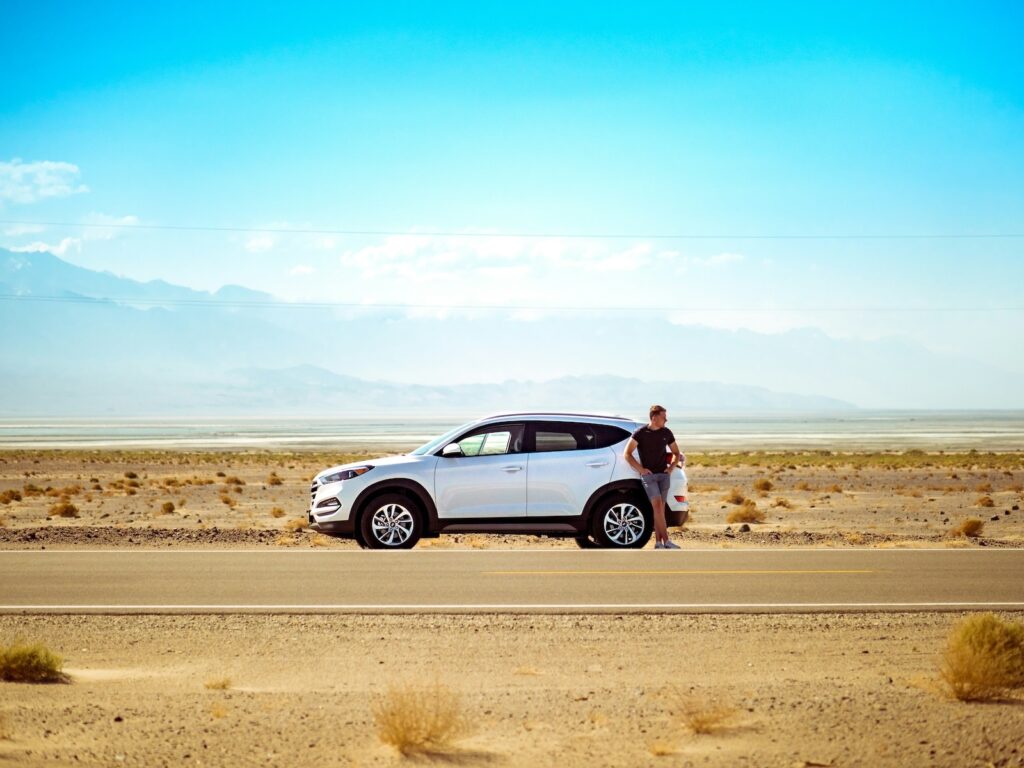Planning a budget vacation often involves long drives, offering the freedom to explore and the opportunity to save on travel costs. However, safety should always be a top priority. Ensuring your vehicle is in top condition is crucial not only for the safety of all passengers but also to avoid unexpected expenses that can disrupt your budget.
This article emphasizes the importance of vehicle maintenance and covers key tasks such as checking the brake system, ensuring proper tire tread and pressure, inspecting lights and signals, and packing an emergency kit. By prioritizing vehicle maintenance, travelers can enjoy a safe and enjoyable vacation without breaking the bank.
Checking the Brake System
The brake system is arguably the most critical component of your vehicle when it comes to safety. Regularly inspecting and maintaining your brakes ensures that your vehicle can stop effectively, preventing accidents and ensuring the safety of all passengers.
Start by listening for any unusual noises when you apply the brakes. Squealing, grinding, or clicking sounds can indicate that your brake pads are worn and need replacement. Brake pads should generally be replaced every 20,000 to 50,000 miles, but this can vary based on driving conditions and habits.
Next, check the brake fluid level. Low brake fluid can affect braking performance and may indicate a leak in the system. Ensure the fluid level is between the “min” and “max” marks on the reservoir. If the fluid is dark or dirty, it might be time for a brake fluid change.
Inspect the brake rotors and calipers for damage or excessive wear. Warped or damaged rotors can cause vibrations and reduce braking efficiency. Regularly maintaining your brake system can help avoid costly repairs and ensure your vehicle stops safely and effectively.
Ensuring Proper Tire Tread and Pressure
Tires are your vehicle’s only contact with the road, making their condition vital for safety and performance. Proper tire maintenance enhances safety, improves fuel efficiency, and prolongs the life of your tires, helping you save money in the long run.
Begin by checking the tire tread depth. Adequate tread depth is essential for maintaining traction, especially in wet or slippery conditions. Use the penny test to check tread depth: insert a penny into the tread with Lincoln’s head facing down. If you can see the top of Lincoln’s head, it’s time to replace your tires.
Maintaining the correct tire pressure is equally important. Under-inflated tires can lead to poor handling, reduced fuel efficiency, and increased wear, while over-inflated tires can cause a harsh ride and uneven tread wear. Check your tire pressure using a reliable gauge and compare it to the recommended levels found in your vehicle’s owner’s manual or on the driver’s side door jamb. Don’t forget to check the pressure of the spare tire as well.
Rotate your tires regularly to ensure even wear. Most experts recommend rotating your tires every 5,000 to 7,000 miles. This can often be done in conjunction with oil changes, making it a convenient addition to your maintenance routine.

Inspecting Lights and Signals
Properly functioning lights and signals are essential for visibility and communication with other drivers. Ensuring all your vehicle’s lights and signals are in good working order helps prevent accidents and ensures you can navigate safely, especially at night or in adverse weather conditions.
Start by checking your headlights. Ensure both high and low beams are working correctly and that the light covers are clean and free of damage. Cloudy or dirty light covers can significantly reduce the effectiveness of your headlights.
Next, test your brake lights. Have someone press the brake pedal while you check that all brake lights illuminate correctly. Properly functioning brake lights are crucial for alerting drivers behind you when you’re slowing down or stopping.
Verify that all turn signals and hazard lights are operational. These signals are essential for indicating your intentions to other drivers and preventing accidents. Additionally, check your vehicle’s interior lights, as well as the lights on the dashboard, to ensure they are functioning correctly.
Packing an Emergency Kit
An emergency kit is an essential part of vehicle maintenance and travel preparedness. Packing a well-stocked emergency kit ensures you are prepared for minor issues and emergencies, providing peace of mind and potentially saving you from costly roadside assistance or repair services.
Start with basic tools and supplies, such as a jack, lug wrench, spare tire, jumper cables, and a flashlight with extra batteries. These items can help you handle common issues like flat tires and dead batteries.
Include a first aid kit with bandages, antiseptic wipes, pain relievers, and any necessary personal medications. A first aid kit can be invaluable in case of minor injuries or medical emergencies.
Pack flares or reflective triangles to make your vehicle visible if you have to pull over, especially at night or in low-visibility conditions. Additionally, include a blanket, non-perishable snacks, and water to keep you comfortable and safe if you’re stranded for an extended period.
Other useful items to include in your emergency kit are a tire pressure gauge, a multi-tool, duct tape, and a basic fire extinguisher. Being prepared with an emergency kit can help you manage unexpected situations and continue your journey with minimal disruption.
The Benefits of Regular Maintenance
Regular vehicle maintenance offers numerous benefits that go beyond safety. Keeping your vehicle in top condition ensures optimal performance, improves fuel efficiency, and prolongs its life. This can save you money on fuel, repairs, and replacement parts, helping you stick to your budget while enjoying your vacation.
Regular maintenance schedules can also prevent small issues from becoming major problems. For example, regularly changing your oil and oil filter prevents engine wear and maintains fuel efficiency. Checking and replacing worn belts and hoses can prevent breakdowns and costly repairs. Keeping your vehicle’s cooling system in good condition prevents overheating and engine damage.
Maintaining detailed records of your vehicle’s maintenance can also be beneficial. A well-documented service history can increase your vehicle’s resale value and provide valuable information to future owners. It can also help you keep track of upcoming maintenance tasks and ensure you don’t miss any important services.

Taking Your Vehicle Out on the Road
Safety should always be a top priority when planning a budget vacation that involves long drives. By prioritizing vehicle maintenance, you can ensure the safety of all passengers, avoid unexpected expenses, and enjoy a smooth and hassle-free journey. Key maintenance tasks such as checking the brake system, ensuring proper tire tread and pressure, inspecting lights and signals, and packing an emergency kit are essential for safe and enjoyable travel.
Regular vehicle maintenance enhances safety and improves performance, fuel efficiency, and longevity. By investing time and effort into maintaining your vehicle, you can save money and avoid the stress of dealing with breakdowns and repairs while on vacation. So, before you set off on your next budget adventure, take the time to ensure your vehicle is in top condition. With these essential vehicle maintenance tips, you can stay safe and save money, making your vacation a truly enjoyable experience.
